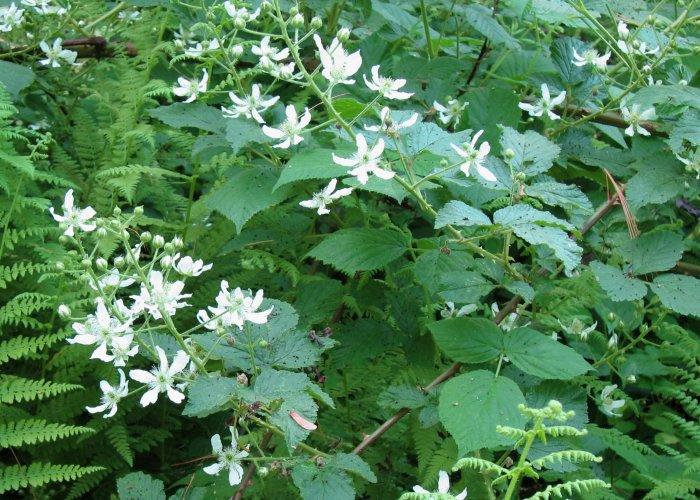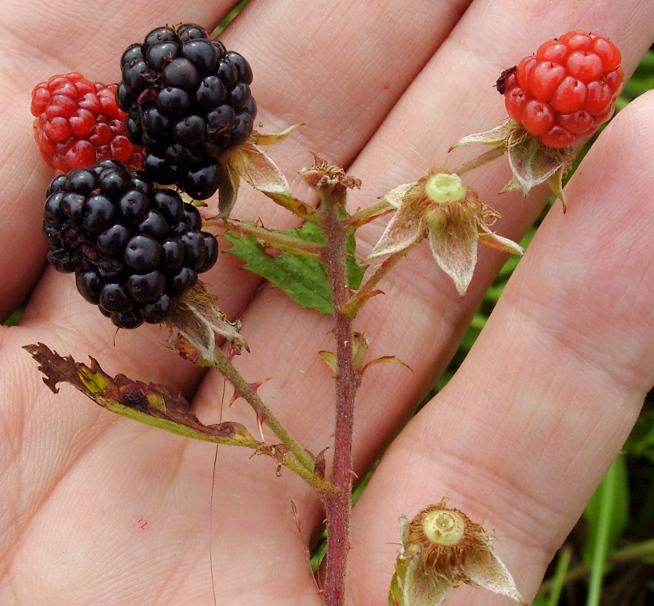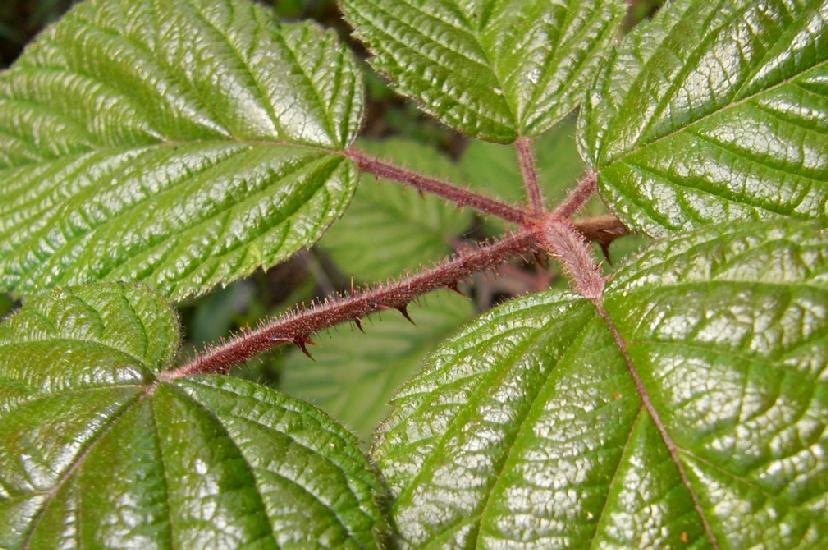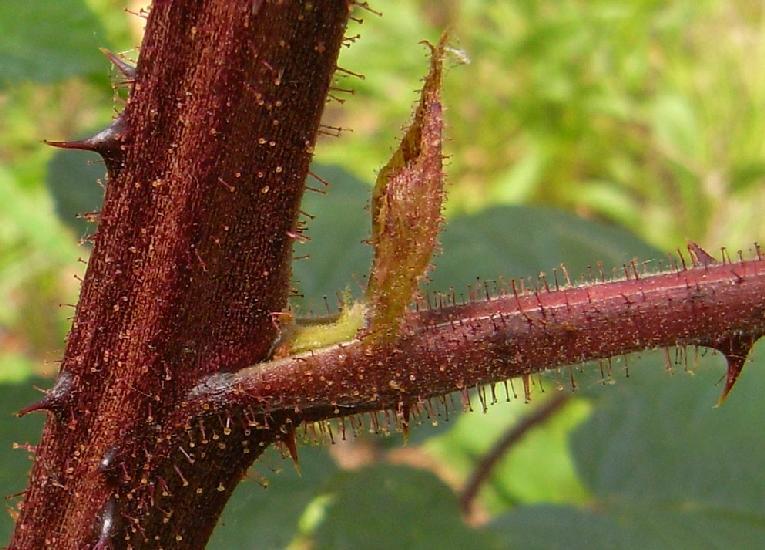Common Blackberry
Rubus allegheniensis
Anyone presented with a choice between blackberries and raspberries will reach for raspberries.
Why? Raspberries and blackberries (as well as dewberries) belong to the same genus Rubus.
All representatives of Rubus have aggregate fruits: each "berry" is composed of a multitude of tiny fruitlets (drupelets),
each containing its own seed. The central part of the aggregate fruit is occupied by a tasteless greenish core (receptacle),
to which drupelets are attached. When you collect blackberries, they come off together with their receptacles, which somewhat
spoils their taste. Raspberries come off hollow, leaving their tasteless cores behind, which makes them tender, tastier than blackberries.
This is one of a couple major differences between raspberries and blackberries. The two most widespread native Rubus representing
these two groups are common blackberry and black-fruited raspberry. While raspberry has a cylindrical (terete) stem, blackberry's stem is ribbed.
That's another important difference between the two. At the same time, blackberries and raspberries have much in common.
They are semi-woody plants, each stem (called cane) living for just a couple years. During the second (and last) year,
each stem of blackberry goes into flower, producing 15-25 showy flowers per cluster, which later develop into fruits.
Fruits change color from red to black while ripening. Leaves are always compound. In common blackberry, each leaf consists of
either three or five palmately arranged leaflets. Three-leaflet leaves appear on the first-year canes (primocanes),
while those with five leaflets develop during the second year on flowering canes (floricanes).
Common blackberry canes, leaf petioles, and stalks within the inflorescence feature complex armature consisting of wide-based
thorns and thinner, smaller spines and prickles; in addition to that, plants are covered with dense hairs and stipitate glands.
Presence of abundant stipitate glands is a character helping identify common blackberry. Common blackberry has a wide range in eastern
and central North America; it is introduced to California and British Columbia.

Flowering. June 7, Blue Hills Reservation, Randolph

Fruiting floricane; a couple fruits already gone and left no core behind. July 25, Tidmarsh Farms, Plymouth

Compound leaf of 5 leaflets, their petiolules thorny, prickly, and stipitate-glandular. June 21, Ashburnham

Ribbed, stipitate-glandular, thorny stem and leaf petiole with a stipule. June 21, Ashburnham